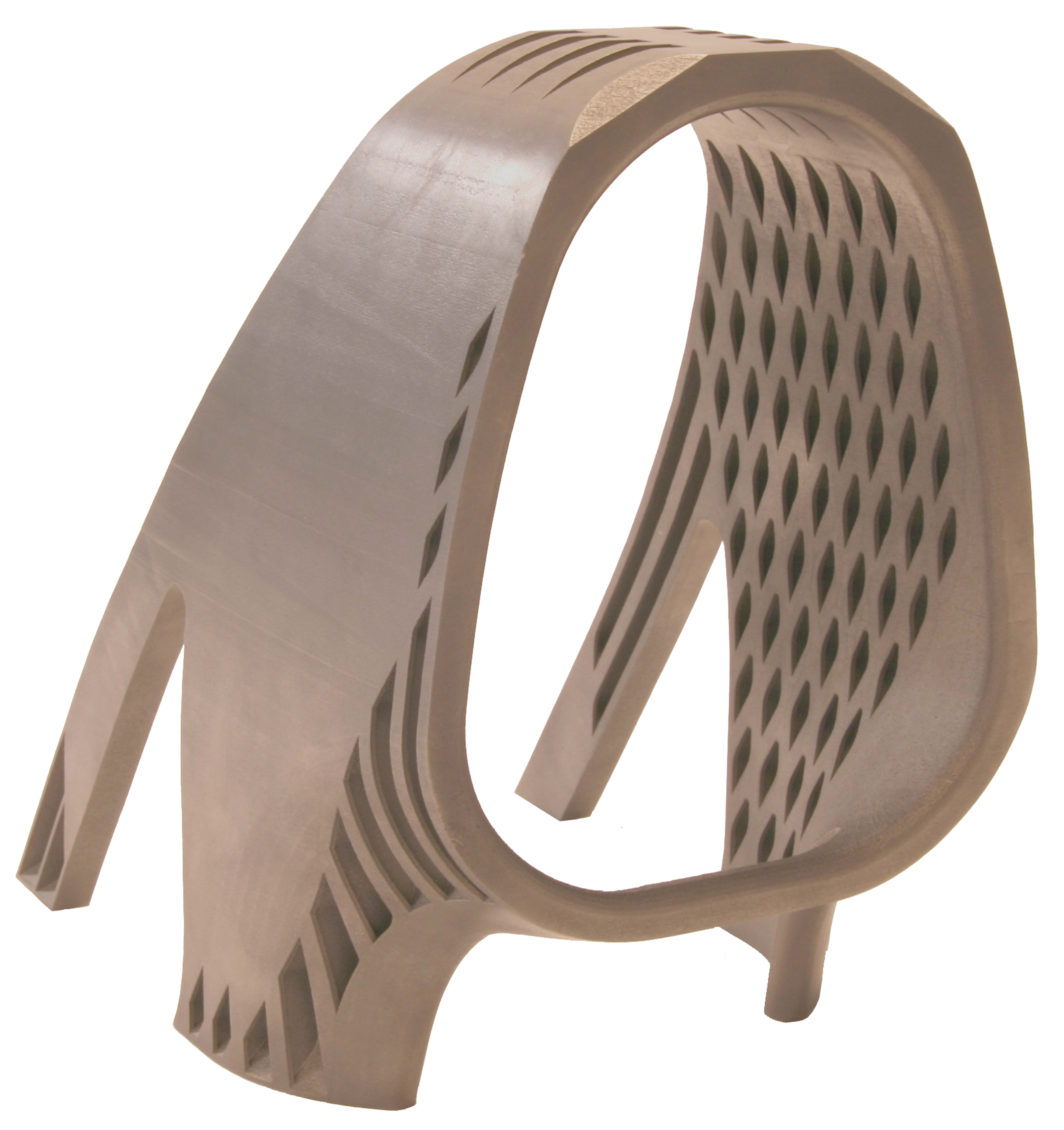Additive manufactured safety structures
In a previous F1-Monitor, Dan Fleetcroft highlighted the advances made in rapid prototyped composite parts. Continuing on from this, another major development has been the ability to the manufacture metal components using selective laser sintering (SLS).
The basics of the metal-based SLS are exactly the same as with polymer-based SLS systems; however, the engineering challenge in its development was ensuring that the components produced have the mechanical stability to perform on a par with machined equivalents. Various Formula One teams have experimented with metal laser-sintered parts, with a high degree of success.
The process uses a more powerful laser than in the polymer-based system, to melt a metallic feedstock, the result being a fully functional metal part. Several manufacturers claim that parts produced using this process have mechanical properties on a par with cast or billet items.
The process is not yet perfect though, as the surface finish – a minimum surface roughness in the region of Ra (µm) 4 is achievable – is not sufficient for some applications, so post-production machining is often required. New developments are occurring rapidly, however, as the systems are refined and the properties of the finished parts improves, so it is highly likely that the time and cost savings will see metal laser-sinter produced parts appearing with increasing frequency.
Evidence of this is the fact that the variety of metal parts (as well as available materials) that can be produced using additive manufacturing processes is growing constantly. One company closely involved with Formula One teams in the area of rapid manufacturing has even gone so far as to produce a complete roll hoop to demonstrate the capabilities of its manufacturing process. A roll hoop is a complex component required to fulfil a number of critical roles. Its primary function is to protect the driver’s head in the cockpit, but other key roles are to act as an air intake for the car, a camera mount and a pick-up for other structures in the car.
The roll hoop is one of the highest points on an Formula One car, and a traditionally built roll hoop is a heavy component to have so high up. Any reduction in weight could be highly beneficial from a vehicle dynamics perspective, so the company set a target weight for the hoop of 1 kg – a potential weight saving of 1-2 kg over a traditionally manufactured item.
The resulting hoop (Fig. 1) contains internal features that would be exceedingly difficult and costly to produce using other manufacturing methods. The part has maintained its aerodynamic line, and features an area to allow for the addition of a camera mount or other component. It is produced from Ti6-Al-4V titanium alloy, so it is both lightweight and strong.
The nature of this manufacturing process requires a support structure to be used when building any downward-facing surfaces, since the powder bed alone is not sufficient to hold the liquid phase created when the laser has melted the powder. The roll structure pictured was produced vertically, to demonstrate the capabilities of building tall components (the part stands 22.5 cm high). Only one small region under the front face of the hoop required support structures to be added for the build phase, while the rest of the design was self-supporting, minimising the need for support structures.
Although it has not been subject to FIA crash tests and is ‘generic’ in its design, it was modelled and subject to FEA assessment to ensure it would meet the same requirements as a traditionally manufactured part.
 Fig. 1 - A ‘generic’ Formula One roll structure made using the SLS process from titanium powder stock
Fig. 1 - A ‘generic’ Formula One roll structure made using the SLS process from titanium powder stock
Written by Lawrence Butcher